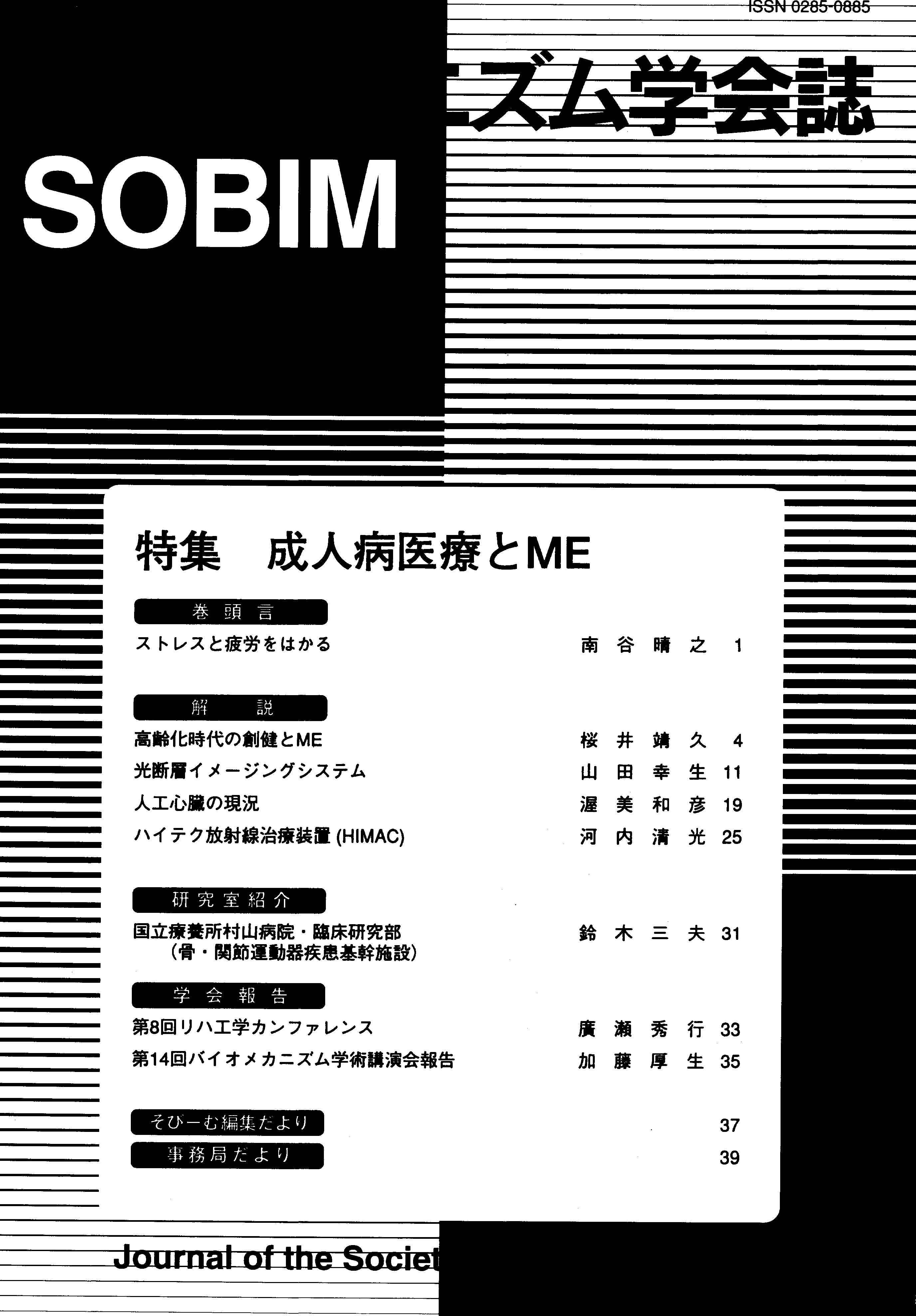All issues

[English version not available]
Displaying 1-8 of 8 articles from this issue
- |<
- <
- 1
- >
- >|
Reviews
-
Toru Suzuki, [in Japanese]Article type: Article
1994Volume 18Issue 4 Pages 183-191
Published: November 01, 1994
Released on J-STAGE: October 31, 2016
JOURNAL FREE ACCESSDownload PDF (994K) -
Mitsuru MajimaArticle type: Article
1994Volume 18Issue 4 Pages 192-197
Published: November 01, 1994
Released on J-STAGE: October 31, 2016
JOURNAL FREE ACCESSDownload PDF (752K) -
Masahiro OohashiArticle type: Article
1994Volume 18Issue 4 Pages 198-205
Published: November 01, 1994
Released on J-STAGE: October 31, 2016
JOURNAL FREE ACCESSDownload PDF (1010K) -
Takashi AoyamaArticle type: Article
1994Volume 18Issue 4 Pages 206-210
Published: November 01, 1994
Released on J-STAGE: October 31, 2016
JOURNAL FREE ACCESSDownload PDF (594K) -
Toshirou OotaniArticle type: Article
1994Volume 18Issue 4 Pages 211-215
Published: November 01, 1994
Released on J-STAGE: October 31, 2016
JOURNAL FREE ACCESSDownload PDF (1143K)
Papers
-
Hisao Oka, Keiji Saratani, Mitsuhiro Tatsuta, Takeki Nakanishi, Takayo ...Article type: Article
1994Volume 18Issue 4 Pages 216-221
Published: November 01, 1994
Released on J-STAGE: October 31, 2016
JOURNAL FREE ACCESSMeasurement of tooth mobility is important to estimate the condition of the periodontium. The authors have developed a simple and portable "T-M (Tooth Mobility) tester", by which the tooth mobility is examined. In this tester, a sinusoidal vibration is applied onto the tooth crown, an acceleration response is detected, and the MI (Mobility Index) score of tooth movement is obtained. The measuring conditions are studied: a contact preload onto the tooth, a vibrating direction of the measuring probe. The tooth mobility of artificial tooth model and the human maxillary and mandibular teeth are measured.View full abstractDownload PDF (702K) -
Mitsuhiro Tatsuta, Takeki Nakanishi, Keiji Saratani, Masahiro Tanaka, ...Article type: Article
1994Volume 18Issue 4 Pages 222-228
Published: November 01, 1994
Released on J-STAGE: October 31, 2016
JOURNAL FREE ACCESSTooth mobility examination is important in planning dental treatment, as it may give an indication of alveolar bone loss and the condition of the periodontium. In clinic, a manual tooth mobility examination is performed. However, its determination of tooth mobility is subjective and depends on the skill and experience of the clinician. The developed T-M tester enables a dentist to measure objective tooth mobility easily and quickly. In this study, we applied this tester to upper teeth and made a comparison with an automatic diagnostic system for tooth mobility, Periotest^<[○!R]> and manual tooth mobility examination.View full abstractDownload PDF (717K) -
Satoru Nebuya, Haruhiko Nohira, Haruyuki Minamitani, Mamoru Shirakawa, ...Article type: Article
1994Volume 18Issue 4 Pages 229-238
Published: November 01, 1994
Released on J-STAGE: October 31, 2016
JOURNAL FREE ACCESSThe improvement effects of active dorsiflexion of the ankle joint of the hemiplegic lower extremity through the application of weak electrical stimulation below the contraction threshold of the M.tibialis anterior (Sub-threshold Therapeutic Electrical Stimulation: STES) on the common peroneal nerve were investigated. During the delivery of STES, the active range of motion during dorsiflexion increased significantly in four of the six hemiplegic patients in whom active dorsiflexion had been observed without STES. After one month of active dorsiflexion exercise using this stimulation method, the active range of motion had clearly increased for all four hemiplegic patients in whom active dorsiflexion had not been observed without STES. Furthermore, a hemiplegic patient in whom active dorsiflexion had not been observed without STES was able to perform active dorsiflexion without STES after one year of active dorsiflexion exercise with STES. The results of this study demonstrate the feasibility of improving the active dorsiflexion motion of the ankle joint of the hemiplegic lower extremity through this stimulation method.View full abstractDownload PDF (1176K)
- |<
- <
- 1
- >
- >|